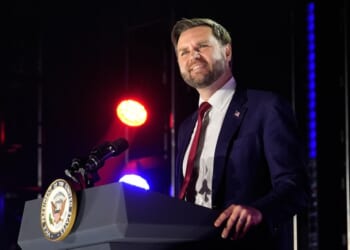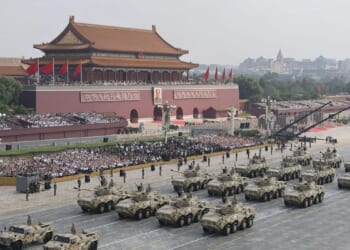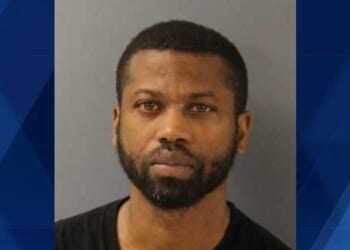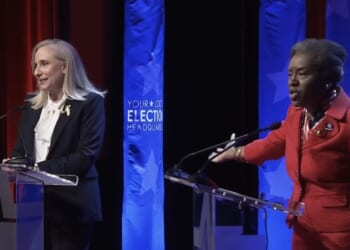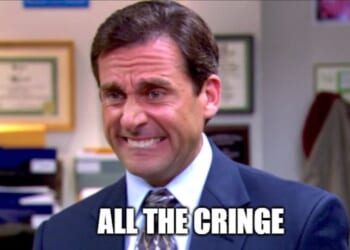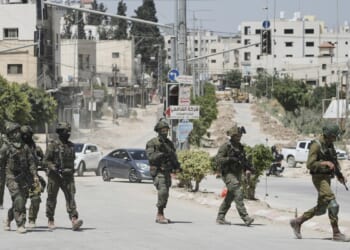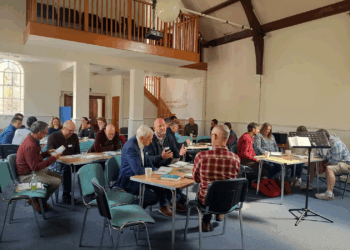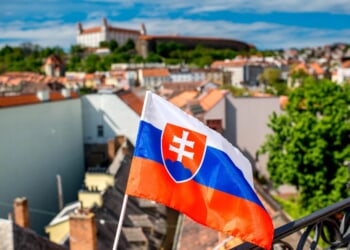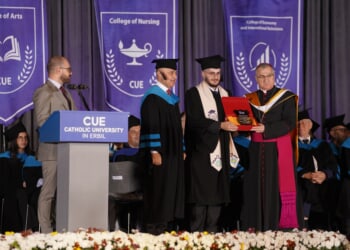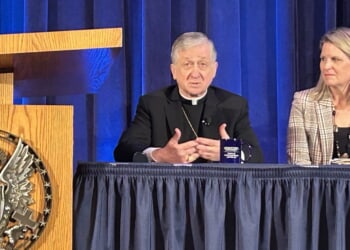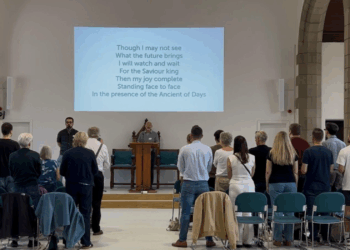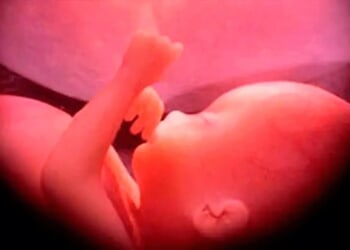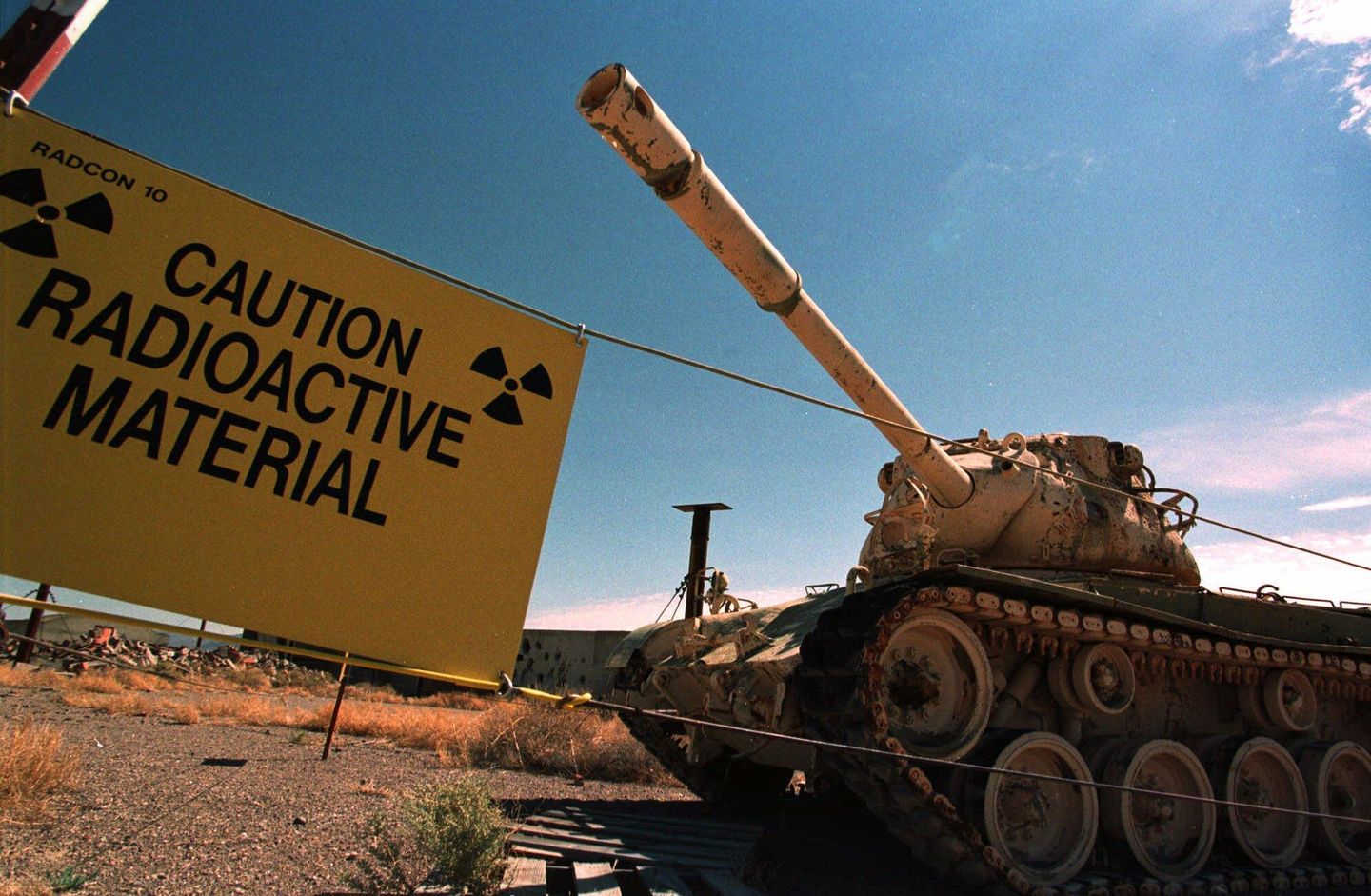
President Trump has announced the U.S. will “immediately” resume nuclear weapons testing, a move that alarmed nuclear watchdogs who say the directive leaves many unanswered questions.
The late Wednesday announcement marked a reversal of a long-standing U.S. policy that has been in place since 1992, just before President George H.W. Bush banned such tests at the conclusion of the Cold War.
“The United States has more Nuclear Weapons than any other country. This was accomplished, including a complete update and renovation of existing weapons, during my First Term in office,” Mr. Trump wrote on Truth Social while on Marine One in South Korea on his way to meet with Chinese President Xi Jinping.
“Because of the tremendous destructive power, I hated to do it, but I had no choice! Russia is second and China is a distant third, but will be even within 5 years. Because of other countries’ testing programs, I have instructed the Department of War to start testing our Nuclear Weapons on an equal basis,” Mr. Trump continued. “That process will begin immediately.”
The U.S. has 3,700 nuclear warheads, behind Russia’s 4,300, according to data compiled by the Stockholm International Peace Research Institute, contradicting Mr. Trump’s claim that America has the world’s largest stockpile. A Pentagon study conducted last year concluded that China is expected to surpass 1,000 warheads by 2030.
Beijing has at least 600 nuclear warheads, an increase of about 100 each year since 2023, according to SIPRI.
Mr. Trump didn’t say what nuclear weapons testing would involve or how it would be carried out. At the meeting with Mr. Xi, the president dodged reporters’ questions about the announcement.
A White House spokesperson referred back to Mr. Trump’s Truth Social post, and the Pentagon didn’t respond to a request for comment. When pressed for more details about his plan, Mr. Trump simply said, “It’ll be announced.”
During his first term, Mr. Trump sought to increase the U.S. nuclear arsenal tenfold, but after returning to the White House in January, he declared denuclearization his “big aim.”
Aboard Air Force One heading home from South Korea, Mr. Trump told reporters that the move might be aimed at getting China and Russia to reduce their nuclear stockpiles.
“I think de-escalation — they would call it denuclearization — would be a tremendous thing,” he said. “We are actually talking to Russia about that, and China would be added to that if we do something.”
Mr. Trump didn’t say if he spoke with Mr. Xi about China’s burgeoning nukes.
The president didn’t answer a reporter’s question about why he posted the announcement just before his sit-down with Mr. Xi.
“President Trump’s announcement of U.S. resumption of nuclear testing suggests that the U.S. is dissatisfied with global security dynamics,” said Rorry Daniels, managing director of the Asia Society Policy Institute.
Mr. Trump’s announcement sparked a swift condemnation from Russia, which expressed surprise that the U.S. would resume nuke testing.
Kremlin spokesman Dmitry Peskov pointed to a global moratorium on nuclear weapons testing and insisted Moscow hasn’t resumed such a move. Russia has not conducted a confirmed nuclear test since 1990.
Mr. Peskov was referring to the 1996 Comprehensive Nuclear Test Ban Treaty, which prohibits “any nuclear weapon test explosion or any other nuclear explosion.”
The U.S., China and Russia all signed the moratorium, but it never went into effect because several countries, including the U.S., didn’t ratify it. Since 1996, there have been several accusations of other countries breaching the pact, but no confirmed tests.
“President Trump mentioned that other countries are allegedly conducting nuclear weapons tests, but we are not aware that anyone was conducting tests until now,” Mr. Peskov said.
Mr. Putin last week held a nuclear launch drill and on Sunday announced that Russia has successfully tested its Burevestnik cruise missile, a nuclear-capable weapon Moscow says can pierce any defense shield.
On Wednesday, Mr. Putin said Russia had tested a Poseidon nuclear-capable super torpedo with great success. The weapon can trigger radioactive ocean swells to render coastal cities uninhabitable.
“If he is referring to the Burevestnik tests, then these are not nuclear tests,” Mr. Peskov told reporters. “Absolutely not. All countries are developing their defense systems, but this is not a nuclear test.”
He added, “I would like to remind you of President Putin’s statement, which has been repeated many times: If anyone deviates from the moratorium, Russia will act accordingly.”
Chinese Foreign Ministry spokesperson Guo Jiakun responded, saying that Beijing “hopes the United States will earnestly abide by its obligations under the Comprehensive Nuclear Test Ban Treaty” and “take concrete actions to uphold the international nuclear disarmament and nonproliferation regime.”
Democratic lawmakers from Nevada, where any testing would likely occur, were quick to push back on the proposed nuclear testing.
“This directly contradicts the commitments I secured from Trump nominees — and the opinion of Administration officials who certify our nuclear stockpile — who’ve told me explosive nuclear testing would not happen & is unnecessary. I’ll fight to stop this,” Sen. Jacky Rosen wrote on X.
Rep. Dina Titus said she would be “introducing legislation to put a stop to this,” noting that the Nevada Legislature in May passed a resolution calling for the feds to maintain their moratorium on nuclear testing.
Analysts say there is no reason technologically, politically or militarily to resume nuclear weapons and caution that too little is known about Mr. Trump’s proposal.
Xiaodon Liang, senior policy analyst on nuclear weapons policy and disarmament at the Arms Control Association, said resuming testing would forfeit some of America’s tactical advantages in the arms race since other nations such as China would follow suit.
“The U.S. has conducted over 1,000 nuclear tests. Other states are far behind us, and China, in particular, has the most to learn from a resumption of nuclear testing,” he said. “This would enable them to improve the quality of their arsenal and, considering that we’re already concerned about their nuclear buildup, this would be an added complication that would impact U.S. national security.”
In the five decades between 1945, when the U.S. carried out the first nuclear test, and 1996, when the Comprehensive Nuclear Test Ban Treaty went into effect, there have been over 2,000 nuclear tests, according to the United Nations. Roughly 1,000 of them were carried out by the U.S., with the Soviet Union second with 715.
China’s last confirmed nuclear test occurred in 1996, and Russia’s was in 1990. The last known confirmed nuclear test was conducted by North Korea in 2017.
Hans Kristensen, director of the Nuclear Information Project at the Federation of American Scientists, said testing a warhead would take at least six months, while a nuclear weapons test would take two to three years.
“There’s certainly no technical reason to do this,” he said, adding, “Maybe there’s some new intelligence we just don’t know about that the Chinese are considering nuclear testing or something. That’s one hypothetical explanation. Another might be shortening our test readiness.”

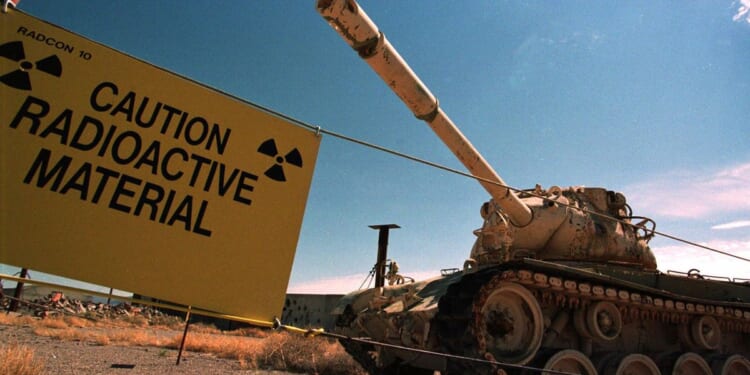
![Scott Bessent Explains The Big Picture Everyone is Missing During the Shutdown [WATCH]](https://www.right2024.com/wp-content/uploads/2025/11/Scott-Bessent-Explains-The-Big-Picture-Everyone-is-Missing-During-350x250.jpg)
